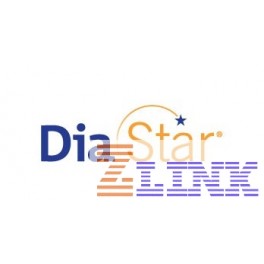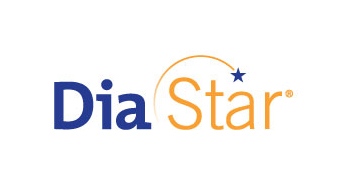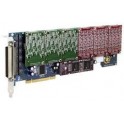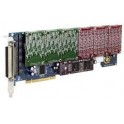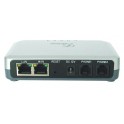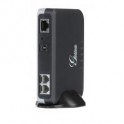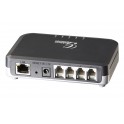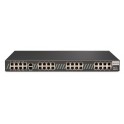Dialogic Diastar Single port tone detection module license enabling call progress detection and custom tone detection (G03-050)
|
Brand
SKU G03-050
|
£26.90 exc. VAT
£32.28 inc. VAT
Quantity
 |
Availability: In Stock
Dialogic Diastar Single port tone detection module license enabling call progress detection and custom tone detection (G03-050)
The DiaStar® Server (DSS) delivers a new level of signaling, media, audio, and video transcoding services to complement and enhance the Asterisk and FreeSWITCH platforms. DSS is compliant with the Woomera open protocol and can operate in conjunction with any project or product that implements a corresponding Woomera client. The DSS allows developers access to video conferencing, video processing, call progress analysis, SS7 and SIGTRAN signaling, while continuing to develop in their native development environment.
CD ISO Downloads
The installation CD is based on CentOS 5.4 and automates the installation of the Linux operating system as well as the DiaStar Server application.
IMPORTANT: This CD will erase all data on the system and re-format your hard disk drive.
![]() DiaStar 2.4.1 x86 64 - 670M
DiaStar 2.4.1 x86 64 - 670M ![]() DiaStar 2.4.1 i386 - 585M
DiaStar 2.4.1 i386 - 585M ![]() DiaStar 2.3 - 582M
DiaStar 2.3 - 582M
Features " " Benefits
- Client/server architecture - Allows for the resources of DSS to be shared by multiple Asterisk or FreeSWITCH systems
- Video Playback and Record - Allows developers to create Interactive Voice and Video Response (IVVR) systems for the delivery of complex instruction sets and other information best delivered as interactive video or graphics
- Application control of video conferencing functions - Provides video conferencing with multiple screen layouts, user-types, and participant captions
- Real-time audio and video transcoding - Allows real-time audio and video conferencing among endpoints that support different codecs; also enables storage of audio and video media in a single format while allowing playback on a variety of devices
- SIGTRAN and SS7 signaling - Allows applications created using Asterisk or FreeSWITCH to be deployed in carrier environments where ISDN, Robbed-Bit, or other inband signaling is not available
- Real-time menu builder - Enables developers to build interactive video menus from inside the application, minimizing video production requirements and providing maximum flexibility in application implementations
- Abstracts and encapsulates media, signaling, and gateway functions - Allows developers to access Dialogic® functionality while working within their native programming environment
ComponentsDSS is developed as an open source project that also includes access to closed-source components from Dialogic that provide value added functionality. These components include certain Dialogic® boards that provide ISDN variants, T1/E1 CAS, SS7, and so on, as well as certain derivatives of Dialogic’s industry-leading media processing software that can add functionality, such as call progress analysis and video.
Features
Call Progress Analysis (CPA) — Enabled through Dialogic® Perfect Call:
- Provides call progress analysis that is intelligently tolerant of the wide variation in call progress signaling tones found in central offices and PBXs around the world
- Enables accurate performance without complex programming
- Uses DSP-based algorithms to accurately discriminate live human speech from recorded human speech and network noise
- Allows the definition of user-defined tone detection templates
- Makes detection results available in Asterisk DialPlan as well as the Asterisk Manager Interface (AMI)
SIP video
Play and record audio and video
- H.263 support
- H.264 support
- MPEG-4 support
- Video transcoding between H.263, H.264 and MPEG-4
- Video transrating Allows video playback at different frame rates
- Video scaling Enables video playback on screens of different sizes
- SS7 support Provides conventional SS7 Support for carrier installations
- SIGTRAN support Provides SS7 signaling over IP
- G.711, G.722, G.729 codecs Enables flexible audio endpoint support
- HD Voice Provides significantly superior natural sound and a dramatically increased sense of participation in live conversations and video conferences
- Video conferencing Allows full duplex video connectivity for multi-party conferences
- RTSP streaming Enables on-demand relay of RTSP video streams from RTSP servers and security cameras
- Native media bridging Allows media to be bridged across the DSS (when both parties in a session are connected through the DSS), reducing load on the Asterisk or FreeSWITCH system
- 3G-324M Adds AMR-NB, H.263, H.264, and MPEG-4 codec support for video-enabled mobile applications
- Fax (V.17) and FoIP (T.38) support Permits fax-capable applications in both TDM and IP environments (planned for a future release)
Technical Specifications
- Network InterfaceIP over a standard Ethernet connection
- PSTN over Dialogic® HMP Interface Boards (DNI Boards)
- SS7 over Dialogic® DSI SS7 Boards
PSTN Channel Density
24 spans (720 simultaneous channels) of TDM (T1/E1) network connectivity
Call Control
Protocols
- SIP
- ISDN
- SS7 ISUP and TUP
- SIGTRAN SCTP, M2PA, M3UA, SUA, ISUP, TUP
Media Streaming
- Protocols
- RTCP
- RTP
- RTSP
Coders
- G.711u/a
- G.722 G.729a
- G.729b AMR-NB
Tone Detection Module
Interfaces Supported
- SIP
- ISDN
- SS7
- SIGTRAN
Features Supported
User-defined tone detection
- Up to 20 user defined tone detection rules
- Single and dual tones with or without cadence
- Tone detection from 300 Hz to 3.5 kHz
Call Progress Analysis
- Busy tone detection Detects 74 out of 76 unique busy/congestion tones used in 97 countries as specified by ITU-T Rec. E., Suppl. #2
- Ring back detection Uses both frequency and cadence detection to detect 83 out of 87 unique ring back tones used in 96 countries as specified by ITU-T Rec. E., Suppl. #2
- Positive voice detection Has speeds as little as 1/10th of a second
- Positive answering machine detection
- Fax/modem detection
- Intercept detection Detects entire sequence of the North American tri-tone
![]()
![]()
|
|
No customer comments for the moment.
